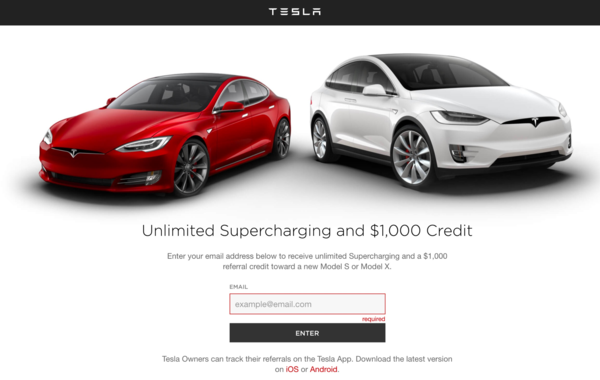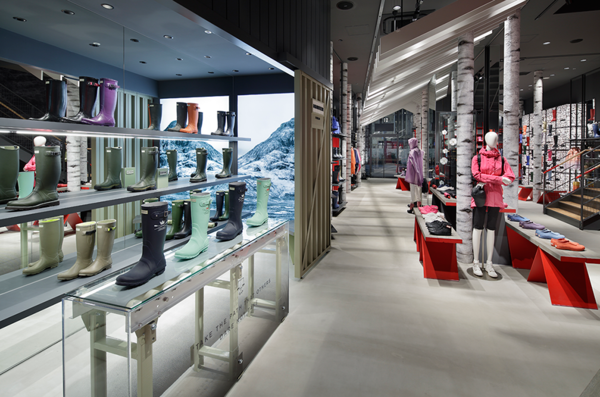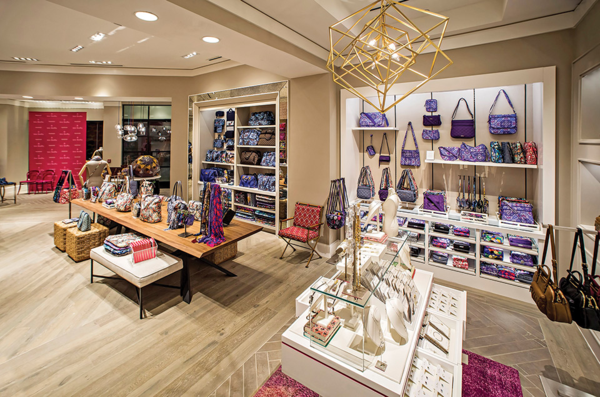 When it comes to marketing your retail store, there’s one tactic that outperforms nearly every other marketing channel: word-of-mouth (or referral) marketing.
When it comes to marketing your retail store, there’s one tactic that outperforms nearly every other marketing channel: word-of-mouth (or referral) marketing.
As consumers, we take traditional advertising and marketing with a heavy grain of salt. According to recent data, 53% of consumers don’t trust advertising. We’re less likely to trust product information that comes directly from brands. And that makes sense — brands have a vested interest in getting us to buy from them.
Fortunately, there are better, more effective ways to market your retail store than only relying on traditional advertising. It’s a way that builds trust between you and your customers, attracts new customers more effectively, and doesn’t bankrupt your store. One of your best tools here is to build a referral program for your retail store.
What is a Referral Program?
Referral marketing is all about getting happy customers to spread the word about your store to friends, family members, social media followers, and anyone else who will listen. In theory, if you delight your customers, they’ll tell their friends.
In practice, it doesn’t always work that way. Maybe the subject just doesn’t come up in conversation.
That’s where a referral program comes into play. Growth marketing resource Referral Rock defines a referral program as “an organized process in which customers are rewarded for spreading the word.”
To really get customers talking about your business, establish a defined process for incentivizing their referrals.
This is the backbone of a referral program: an organized process for customers to refer your business and get rewarded for it (often in the form of discounts or small gifts.)
Beyond that, a referral program can be anything you need it to be — customized and tailored to work for your customers and your store.
Why Your Store Needs a Referral Program
Beyond fostering long-term customer relationships and rewarding loyalty, retail referral programs are, simply put, the single most effective marketing tool you can employ. Not only are referrals overwhelmingly effective at bringing new customers to your store, they’re also one of the most effective marketing tactics — saving you both time and money.
When Nielsen surveyed consumers around the world, a whopping 84% said that they trust brand referrals from their friends and family. That number puts referrals ahead of the next most trusted channel (branded websites) by 15%.
A Harvard Business Review study of consumers at a large German bank found that referred customers were more valuable and more loyal than customers attained through any other channel. They were 18% more likely to stay with the bank long-term and they generated 16% more in profits than other customers. When all was said and done, the bank saw a 60% return on investment (ROI) from their referral program.
All of those numbers are another way of saying one simple thing: referral programs are tremendously effective from both a customer acquisition and ROI standpoint. That’s why a 2014 survey saw small business owners rate referrals as the number one way they acquire new customers.
Convinced? Let’s talk about best practices for building your own referral program.
Best Practices for Retail Referral Marketing
As we mentioned above, a referral program is endlessly customizable based on your store’s needs and the habits of your customers. With that being said, it’s still important that you understand and employ some best practices to drive results for your bottom line.
Start With Amazing Customer Experiences
Even the best referral program isn’t worth much if customers aren’t satisfied when they shop with you. That’s why the foundation of successful referral marketing is a phenomenal customer experience.
Customers who aren’t happy with their experience in your store (for one reason or another) aren’t going to recommend that their friends or family stop by. No matter how enticing your incentives, it’s not going to happen. Truly satisfied customers, on the other hand, are already ready to tell the world about how great your store is. That means they need less incentive to refer friends, too.
FURTHER READING: Learn more about how to create an outstanding customer service from these retailers providing elevated experiences.
Do the Research Upfront to Attract the Right Kind of Customers
If you’ve been in business for a while, you know that not all customers are created equal. Since referral customers tend to be similar to the customer who referred them, it’s important that your referral program targets the right kind of customers from the start.
Spend time learning about your existing customer base. Who are your most valuable customers? Are any of them already sending referrals your way? What traits, habits, and demographics do those customers share?
Once you have a solid picture of your best customers, tailor your referral program to those people. The structure of the program and the incentives you offer should cater to this audience. That way, your initial time investment setting up the program will lead to the most valuable and loyal referral customers.
FURTHER READING: Dig into what makes your ideal customers. Learn how to create buyer personas for your retail brand.
Make it Radically Easy for Customers to Refer and Claim Their Reward
No retailer can offer incentives enticing enough to make customers jump through hoops to refer someone (without cutting into their bottom line, that is.) That’s why the most effective referrals programs make it radically easy for customers to refer their friends and claim their rewards.
It’s important that the program runs seamlessly on your end, too. As your store grows, it isn’t realistic that you’ll manually track referrals and send out incentives and thank-you notes. That’s why it’s a good idea to choose a streamlined, scalable referral program tool to handle the back-end of your store’s referrals. (More on that later!)
FURTHER READING: Need some additional ideas on how to reach new customers? Here are 10 to get you started.
Offer Incentives That Are Valuable to Customers
The idea behind just about every referral program is that happy customers are more likely to refer friends and family to your store — especially if you offer an incentive for doing so. As we mentioned earlier, the No. 1 incentive is a great customer experience.
Beyond that, it’s important to choose your referral incentives wisely. Your goal is to strike the right balance between encouraging customers to make a referral and cutting into your own bottom line. Most of the time, that number will vary with the cost of products in your store, so you may need to do a little experimenting to land on the perfect incentive.
Incentives can take many forms — which is why it’s important for you to choose rewards that resonate with your customers. You can reward referrers with discounts on your products or services, free merchandise or gifts, additional points for loyalty program members, or inviting them to special in-store events. While there are dozens of incentive examples, choose the ones that are right for your brand and your customers.
FURTHER READING: Now that you know what incentives to offer your customers, learn other ways to keep them happy with these retention strategies.
Promote Your Referral Program Far and Wide
The best referral program in the world doesn’t do your store any good if none of your customers know about it. That’s why promoting your referral program is just as important as creating it.
You can spread the word about the program throughout your store (particularly at checkout) and via any online marketing you already do. That includes social media, email marketing, and/or on your website. If you have an ecommerce store, too, order confirmation emails are a great place to promote your referral program.
FURTHER READING: Confirmation emails are just one way to stay in touch with your customers. Learn more expert tactics to amp up your post-purchase communications.
Measure and Tweak Your Referral Program As Needed
Just like any other marketing effort, building the perfect referral program for your store involves a little tinkering. If you’re using a referral marketing app or tool, it’s important to choose one that offers reporting on how effective your program is.
How many new customers have you earned through referrals? What’s the average customer lifetime value of a referral? How loyal are referred customers?
All of this information and more will help you further refine your store’s program — from incentives to customer targeting — so it becomes more and more effective at winning new customers and driving retail sales.
FURTHER READING: Data can help boost more than just your referral program. Learn how to use other point-of-sale data to improve your retail business.
Successful Retail Referral Programs
As always, retail brands offer plenty of opportunities to learn from their successes. Let’s take a look at some of the retailers who’ve invested in top-tier referral marketing.
Tesla Turns Customers Into Brand Advocates with Incentives That Grow

Tesla Motors and its referral program prove that referrals aren’t just valuable for lower-priced products. They created a tiered program that rewards customers for each referral who goes on to purchase a Tesla. Brand advocates can share a personal referral code worth up to $1,000 off. As their referrals convert, customers move up and unlock even bigger rewards.
Hunter Rewards Both Sides of the Referral

Hunter (best known for their iconic rain boots) has kept their referral program simple. When a customer refers someone new, they get 10% off their next order. But what sets Hunter’s program apart is that the reward is double-edged. New customers who’ve been referred also receive 10% off their first order, giving them a little extra incentive to convert and become customers.
Vera Bradley Qualifies Their Incentive to Save the Bottom Line

As a retailer, it’s important not to let your referral program hurt your bottom line. Vera Bradley keeps their program in check by putting a qualifier on both the referrer and the referred customers’ incentives. Both are offered $15 off their order, but they have to spend at least $75 before the order qualifies for the discount.
Tools to Help You Build Your Own Retail Referral Program
One of the reasons referral programs are so effective from a time and effort perspective is that there’s an abundance of tools that make it quick and easy to set up.
Once you have a program up and running, these solutions take it from there — meaning your incentives and tracking are all automated. So you can focus on other things while reaping all the benefits of a powerful referral program and analytics. Here are a few recommended referrals tools to check out:
Moving Forward With Your Referral Program
Now that you have a deeper understanding of referral marketing and referral programs, you can dig in and decide what kind of program is best for your business.
Do you currently run a referral program? How successful is it in driving new business? Lets us know in the comments below.

